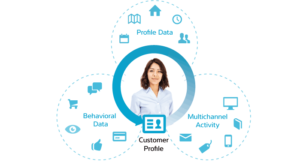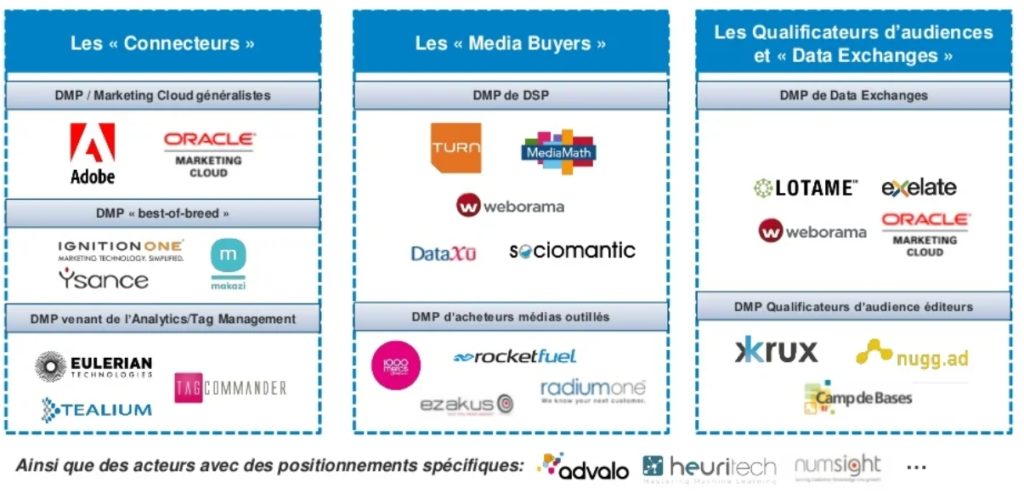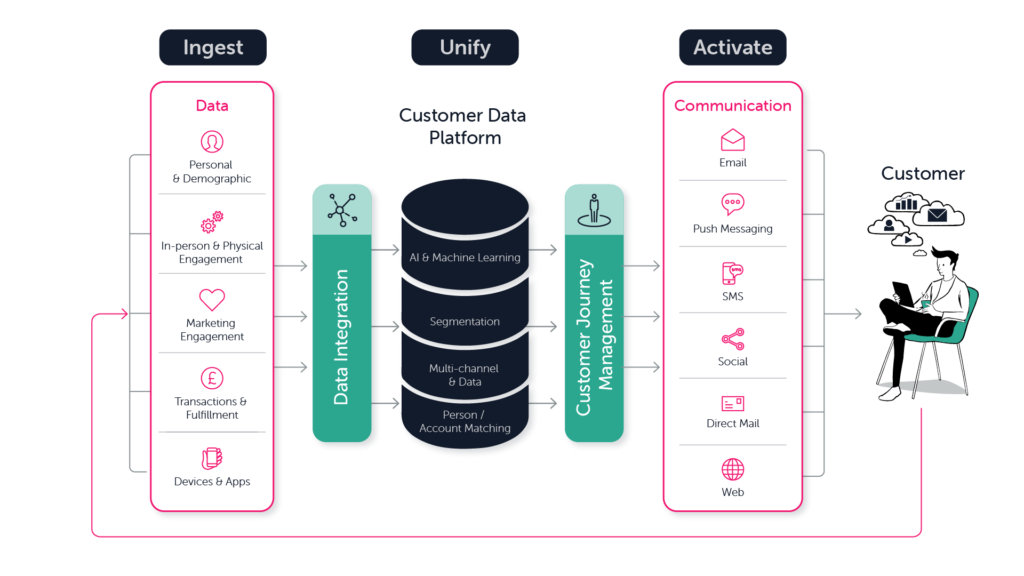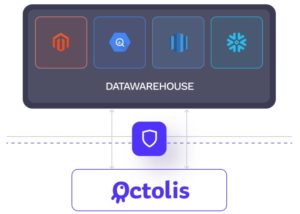Today, customer data is the fuel that drives the customer-centric data that marketers love. But when customer data comes from disparate sources, it creates a massive drag on any personalized marketing initiatives.
To create a single view of customer information, the world’s leading retailers have proposed so-called “360” customer databases. The first UCR tools were born, and have evolved over the years. The notion of CDP adds the idea of a software layer.
As a reminder, a modern CDP, according to the CDP Institute , is a packaged software offering a unified customer database, accessible to other systems in an organization. It gives all departments valuable information to improve their performance.
From customized RCU to the so-called “data warehouse-centric” CDP, we present in this article the brief history of customer data management platforms.
📕 Summary
1st generation: Customised RCU
The first generation of customer data management platforms was born with the Single Customer Repository (SCR). This is a single view of the customer. For each person you deal with, it provides an overview of all the data collected about them. Most often, the UCR is built by a specialized data integrator: AID, Epsilon (ex Publicis ETO), Business & Decisions… etc.
To create a UCR, you need to capture customer data in real-time from all your channels and internal systems. The data integration is done in batch, with daily flows. Once collected, RCU is the process of cleaning, normalizing, and reduplicating these data fragments. It brings them together to form a single source of truth. In the case of UCR, these processes are custom-coded.
Finally, the RCU does not have an interactive software interface like the last generation of CDP. It may provide access to a very basic 360 customer record interface, but this is not clickable.

A 360 customer profile brings together personal and behavioral data. Source: Aria System
As the name suggests, a Single Customer View is simply a “view” of customer information, not a database, as we will see in the following generations. SCR is more about the process that the data goes through, rather than a physical database.
2nd generation: Data Management Platform—2010 to 2015
DMPs are a new generation of platforms focused on the collection, processing, and activation of anonymous visitor audiences. It is part of the great era of the rise of programmatic online advertising (RTB).
Indeed, a DMP connects to a DSP (Demand Side Platform) or SSP (Supply Side Platform) to buy online advertising, a banner for example. The DMP ingests anonymous customer identifiers, compares them to third-party lists, and builds a look-alike model. It then selects similar anonymous individuals from third-party lists and sends these lists to advertising networks.
In short, a DMP is useful for segmentation, building similar audiences, and optimizing paid media spending. It does not to first-party data. Most of the data it uses is third party, stored as cookie identifiers, and based on online user behavior.
There are several types of DMPs. Some focus solely on processing anonymous data (such as Weborama), but others reconcile anonymous visitors with customers and put forward CRM use cases. ITheyare is more similar to what we call a CDP today.
Among the French DMP players, we can think of Yance, Markazi (no longer in existence,) or Mediarithmics.

DMP players in France. Source: Converter
3rd generation – Customer Data Platform on the shelf
In a context of declining RTB, DMPs are used less and less for media activation, and more and more for “CRM” activation on several channels.
Moreover, with the rise of best-of-breed architectures, companies are becoming more digital and are starting to multiply their martech bricks. The CDP is therefore the natural hub for customer data for companies that do not choose the full Salesforce or full Oracle approach (and even then, don’t think that the Salesforce bricks are all perfectly integrated…).
The CDP: a new tool for business teams
This is how a new generation of players capable of processing anonymous behavioral data, but above all personal data, is born. All this while respecting the regulatory framework, which is becoming increasingly strict on the subject.
In a CDP, the software interfaces are much simpler and offer more and more possibilities for connecting different sources and destinations. They also make it possible to set up processing rules, add scores, etc. This new generation of solutions is aimed at marketers, without requiring technical skills.
The term CDP appeared and developed at that time. The current definition of CDP corresponds to this generation of tools.

CDP: from ingestion to activation of data. Source: CleverTouch
CDPs: a new Eldorado for martech players
Many publishers are launching (or relaunching) a CDP offer to create a 360° view of the customer:
- Players already present in the Analytics / Tag Management universe: Eulerian, Tag Commander, etc.
- Players are already present in the CRM / Marketing Automation universe. All the major publishers are launching a “CDP” offer (Adobe, SAP, Salesforce, Oracle, Microsoft). This is also true to a lesser extent in the mid-market, with the publisher NP6 buying the DMP Ezakus, and Selligent positioning itself as a CDP, by developing its tracking module “Target”.
- And above all, many new players with various specialties:
- Campaigns” CDPs that integrate marketing automation functionalities, such as Blueshift
- CDPs specializing in B2B, such as Segment, Leadspace
- CDPs specialized in B2C and Retail, such as AgileOne (acquired by Acquia), Amperity
4th generation – Customer Data platform “Datawarehouse centric
The failure of off-the-shelf CDPs
Finally, in the 4th generation of customer data platforms, we find the so-called “Datawarehouse centric” CDPs. These were born when the big CRM publishers such as Adobe, Salesforce, Oracle, or SAP failed to get their CDP products adopted. These tools were not designed as frameworks on which third-party applications could run. In other words, their CDPs were software suites, not platforms.
Although traditional Martech vendors failed to offer true CDPs, marketing and IT departments still decided they needed them. So they eventually found another way to build theirs. This is where data warehouses come in.
They’ve come a long way recently, and are now emerging as the centerpiece of corporate data. It is possible to use a data warehouse as a CDP, thus building on the future of this data architecture.

October embodies this 4th generation of CDP
Why choose a data warehouse over a CDP?
Off-the-shelf CDPs have serious shortcomings: lack of flexibility in the data model, inability to reconcile different tables, and difficulty in adding calculated fields, especially on behavioral data. In addition, CDPs are not flexible, they impose their ecosystem. However, each company has a unique data model. With an off-the-shelf CDP, you are compartmentalized.
Moreover, CDPs claim to be the single source of truth, but in reality, they are no substitute for data warehouses, which contain all your data. The first reason why your CDP should be the data warehouse is that it is the source of customer data. Some CDPs allow you to import data from the data warehouse, but this causes additional latency and the immediacy of the data is a promise not kept.
Looking for a modern CDP solution? It’s easier than ever to centralize all your data in a so-called data warehouse-centric tool. Turn to the following players: Octolis, Census, Hightouch, or Polyatomic.


